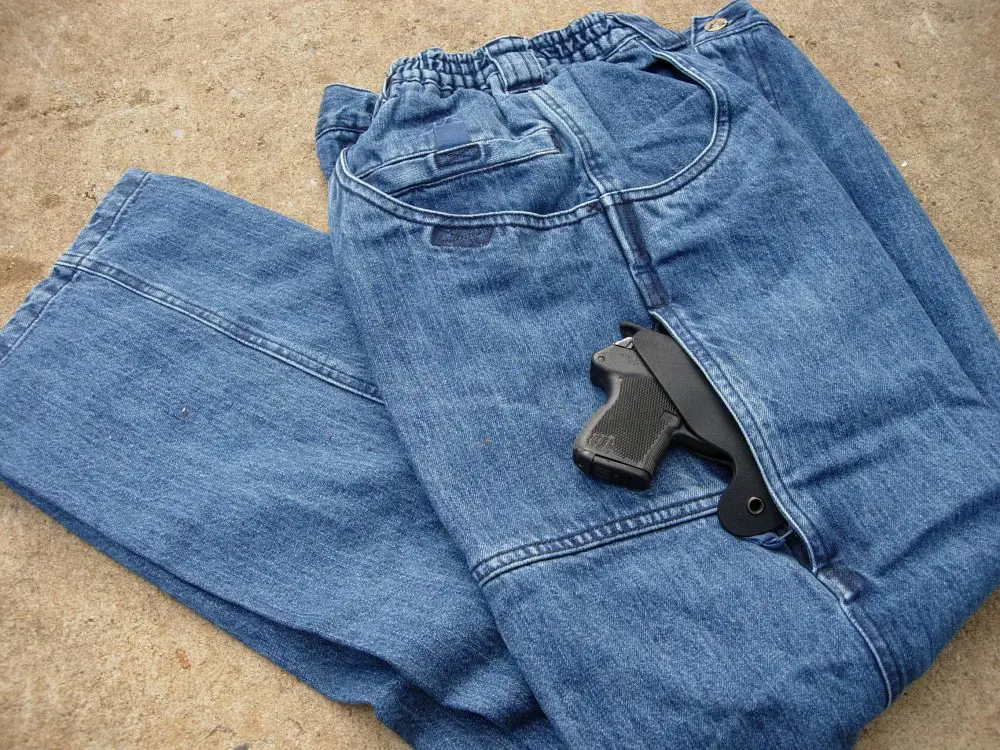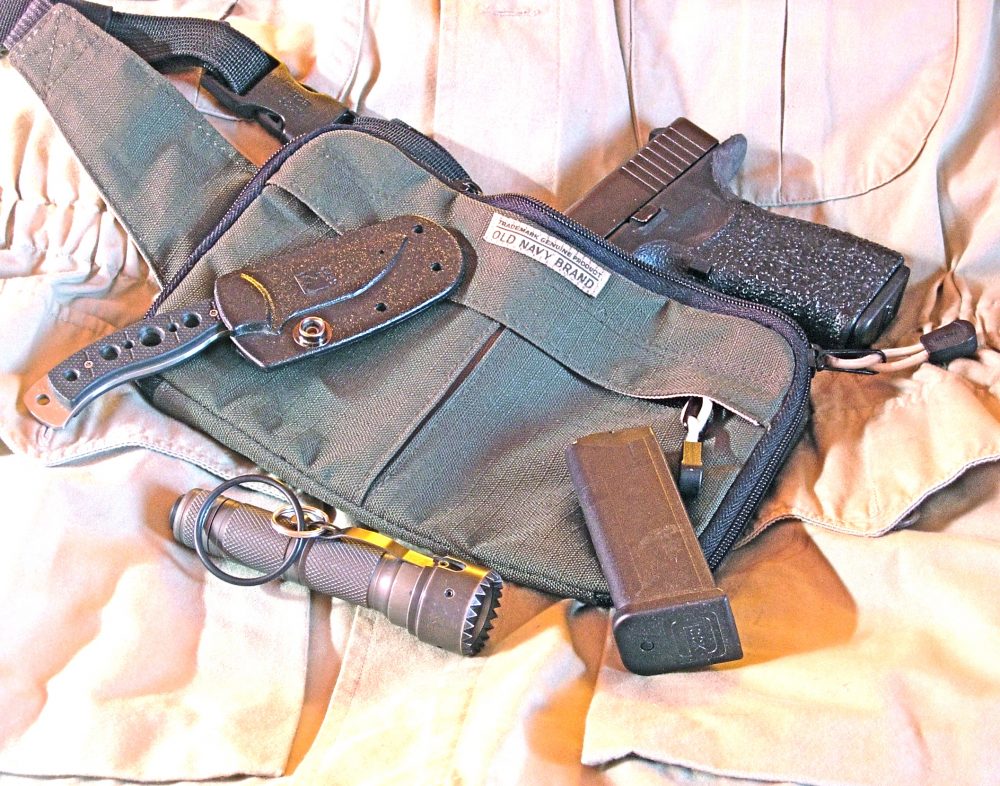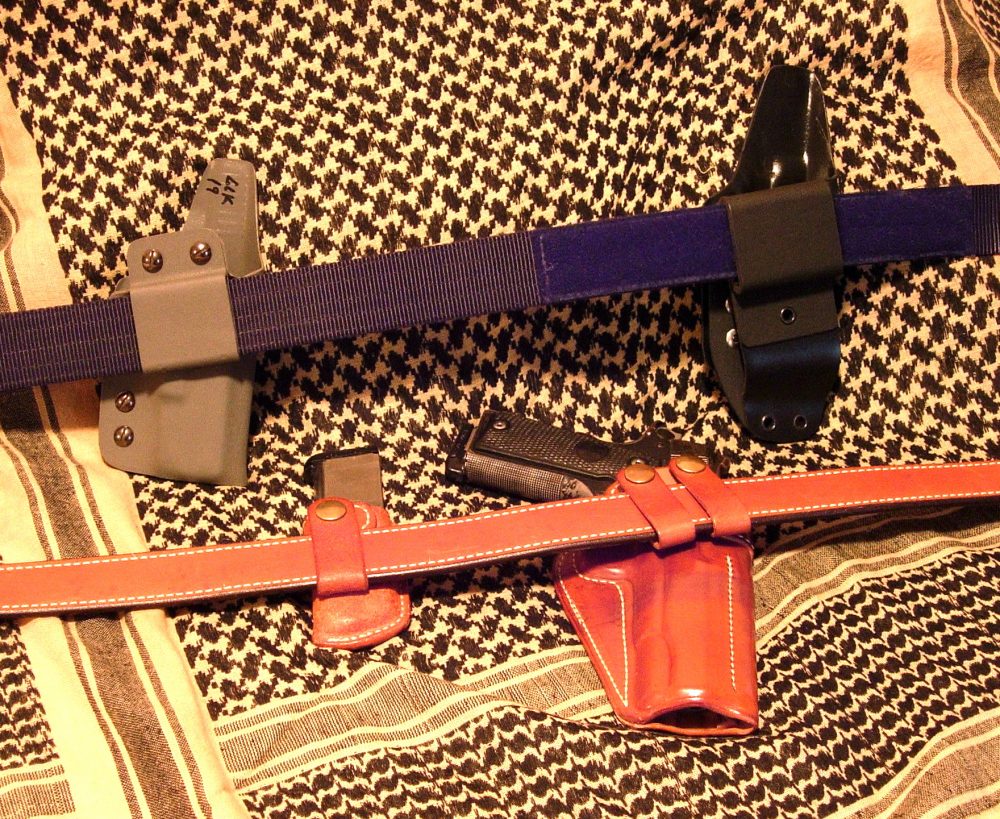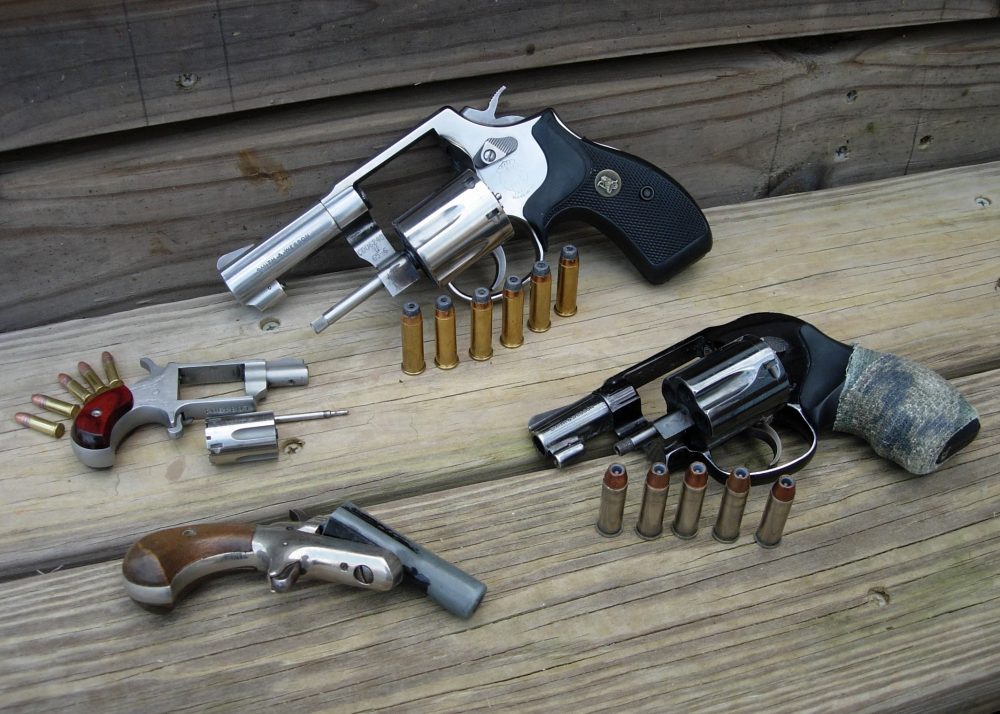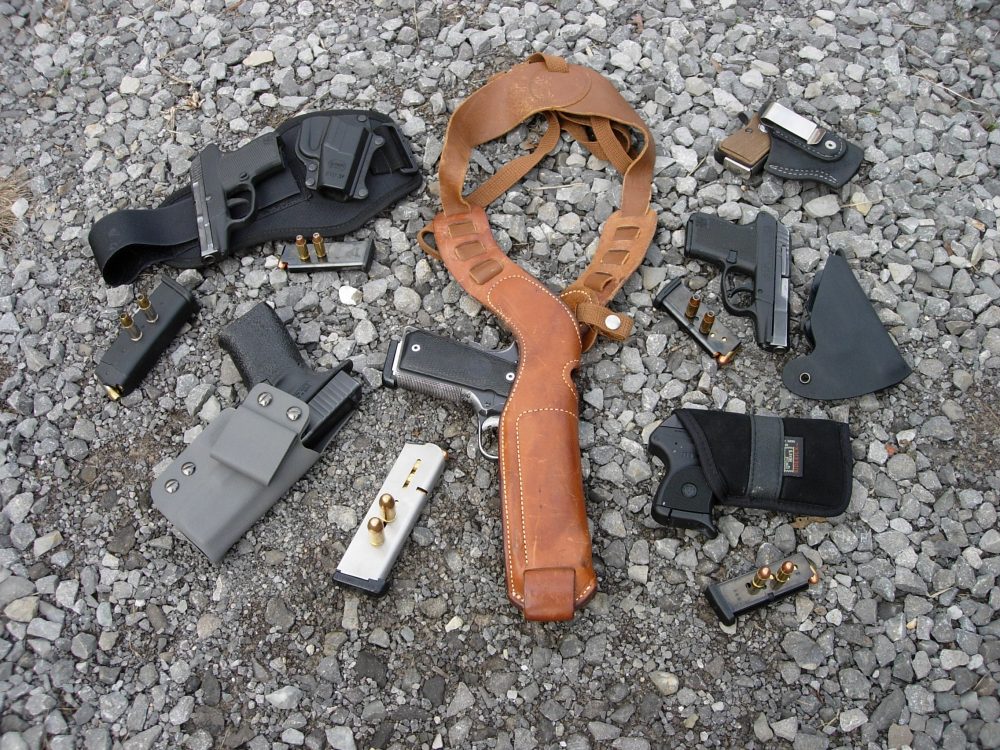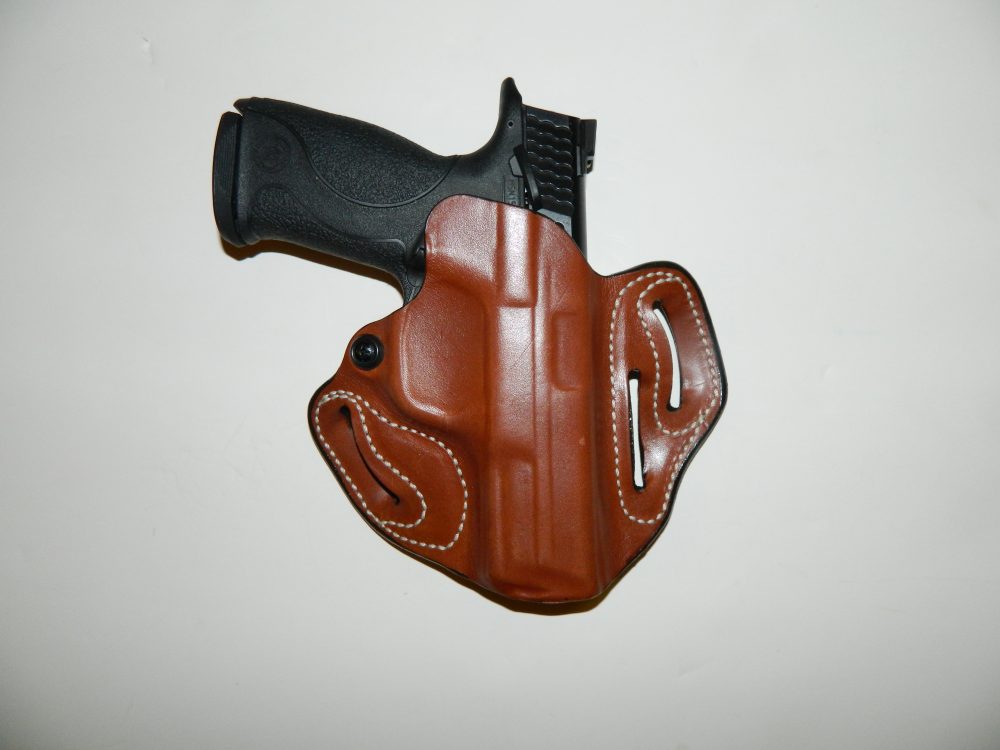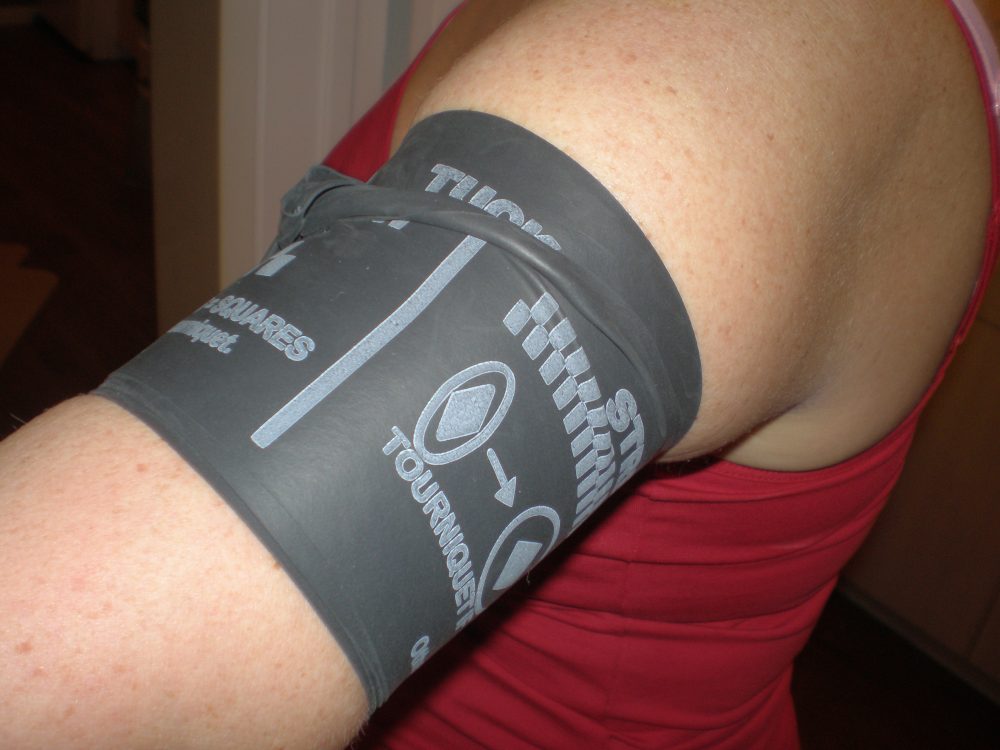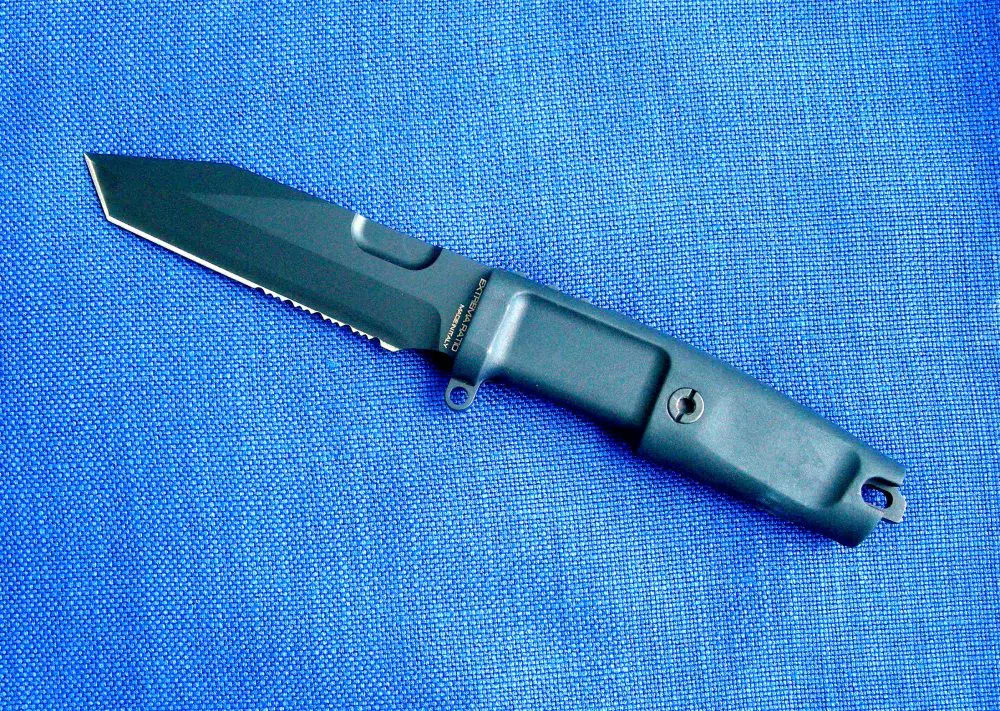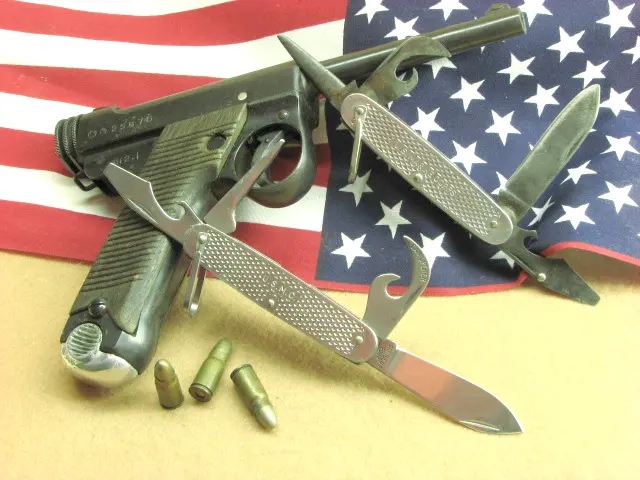How you carry a concealed weapon and the clothing you wear are just as important as any other tactical consideration.
For the armed professional, duty clothing is normally mandated, but what about when you carry off-duty or undercover? You don’t want to dress in a way that announces that you are armed, yet if something goes bad you need to be able to fight effectively.
For armed citizens, have you considered that how you dress may affect your ability to respond to a violent confrontation? A threat attacks. You move to create distance, but slip and fall because your shoes don’t grip on wet concrete.
To carry concealed, without anyone knowing you’re armed, and still be able to respond to a violent attack, there are four areas you need to consider: carry method, clothing, practice and mindset.
Several companies make clothing with concealed pockets. This pair of jeans by EOTAC has a small zippered pocket on the side of the leg that is perfect for a small auto or revolver and pocket holster.
Table of Contents
HOLSTERS
Determining which carry method works best for your lifestyle takes a lot of thought. Generally there is a trade-off: the more concealed your weapon is, the more time it takes to access that weapon. Knowing it takes longer to present a weapon from concealment makes it even more important that you stay aware of your environment, keeping your eyes up and scanning, looking for possible trouble. Then if you need your weapon, hopefully you have time to get to it.
My first carry holster was a Bianchi shoulder holster, which held my Browning Hi-Power. Shoulder holsters were popular during frontier times because they allowed men to carry concealed in towns that restricted pistols, which normally hung on belts or were simply shoved into waistbands, and when I was starting out, it seemed like a good way for me to carry. Wearing a jacket, sweater or oversize shirt covered the rig, and after practicing I could present the weapon fairly quickly.
Small fanny pack that doesn’t look tactical is a great way to carry a weapon and additional gear. If this is how you carry, this is how you should practice. If the range you practice at doesn’t allow this, then dry practice it at home.
Although shoulder holsters are the brunt of many jokes, they do have practical applications. From seated positions—e.g., at a desk, in an automobile or aircraft—you have easier and quicker access to the pistol. They work well for women, since most belt holsters don’t fit women very well. One downside with shoulder holsters is that if your fight starts out as a physical confrontation with the attacker, presenting the pistol or preventing a disarming attempt is difficult.
Best way to draw from an ankle holster is to kneel down, behind cover if possible, pull the pants leg up with the support hand so the strong hand can grip and present the pistol. Ankle holsters also work well from seated positions.
I presently carry a 1911-type in an IWB (inside-the-waistband) holster. With the majority of the pistol and holster covered by my pants, an untucked shirt, lightweight sweater, sport coat or vest conceals the pistol’s grip. IWB holsters are available in a variety of styles, in both leather and Kydex. There are even IWBs that allow you to tuck your shirt in over the pistol grip, with only a small portion of the holster showing.
When carrying on your belt is not an option, ankle holsters may be a good alternative. Renegade Holsters makes one of the most comfortable ankle holsters I’ve worn. With a small revolver or semi-auto, you’ll literally forget you’re carrying.
Pocket holsters are another possibility. Pocket holsters prevent the gun from “printing” on the outside of your pants, and keep dirt and grime, which can accumulate over time and create a stoppage, out of your weapon.
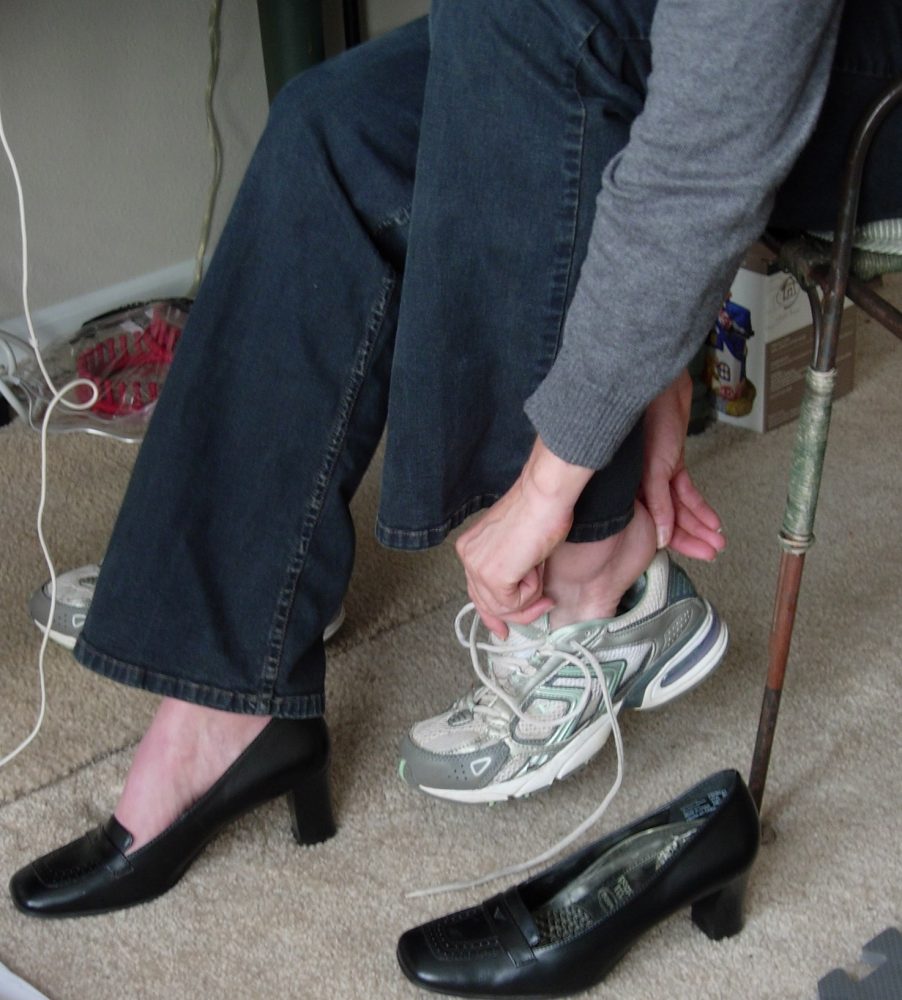
“Bellyband” holsters—elastic bands that strap on above your belt, underneath your shirt—are another alternative. Normally I look at these carry modes and smaller pistols as backup options, but sometimes these methods may be your best or only choice.
You can also carry without the weapon actually being on your body. A small carry bag, such as a computer bag, backpack or purse, can conceal your pistol. Several companies produce these items specifically designed for concealed carry. These methods also allow you to have flashlights, edged weapons, or other survival tools in one package. It goes without saying that the bag has to be with you in order for you to access your weapon and gear…
Your final solution for carrying will likely include multiple holsters and weapons to fit different circumstances. You might also seriously consider carrying more than one weapon, for example one pistol on your belt and one on your ankle. A secondary weapon is nice to have if your primary stops working, a friend needs arming, or, while curled up in the fetal position getting booted about the parking lot, the pistol on your ankle is easier and quicker to get to.
CLOTHING
The goals with clothing are to blend into your environment and to dress in a manner that allows you to fight. The clothes you wear may dictate what holster you use, or the holster may determine how you dress. Your carry method may change with the season. The way I carry and dress in the summer is different from the methods I use for winter.
Regardless of the style of clothing, make sure it doesn’t restrict your ability to fight. Coats or jackets, for example, should allow easy access to your pistol, even when buttoned or closed.
Sewing small weights into the bottom pockets of your coat will help swing it out of the way when you sweep the jacket or vest to draw your weapon. Pants, dresses/skirts, and shirts should be loose enough for you to drop into a kneeling position if necessary to take advantage of cover.
Good footwear is essential. In a fight you move to create distance, get to protective cover or obtain a clear angle of fire. Ending up on your ass because your shoes slipped out from under you makes winning more difficult. Footwear should grip properly on all surfaces, wet or dry, yet still provide the look you need. Even if your daily activities require you to look professional, such as wearing a suit and tie, you can get shiny shoes that provide traction. If it’s a really bad day, you may end up having to walk a long way in those shoes, so make sure they’re comfortable.
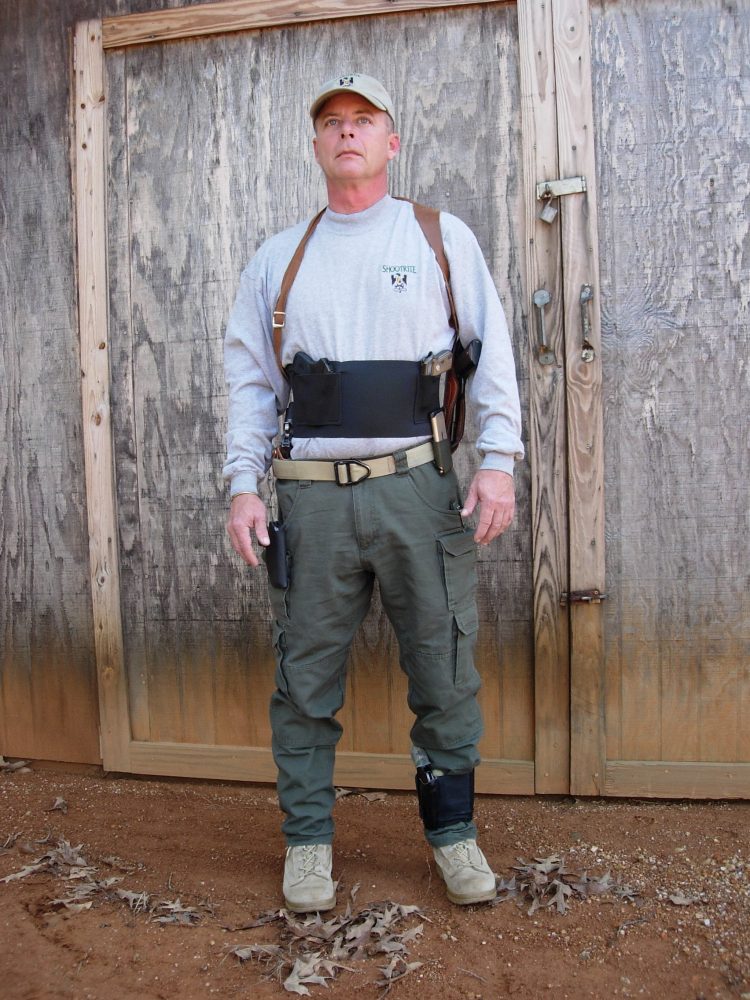
For women who wear heels, you might consider ditching the shoes during trouble, but that leaves you barefoot on unknown terrain, where there could be broken glass or other dangers. Having a pair of running shoes in a carry bag or by your desk is a good idea. With advance warning you can slip them on, or if you do have to dump the fancy shoes, you can slip into the runners when you get an opportunity.
Clothing shouldn’t attract attention. If you’re wearing a T-shirt and hat with a “Brand X Firearms” logo and a tactical-type vest, the bad guys may assume you’re armed even if you’re not. You don’t want to be the first victim, chosen just because of your clothing.
As for clothing color, subdued colors such as grays, khakis and tans work well. These colors don’t stand out in a crowd, and if you need to hide or conceal your location, they make it easier to blend into both urban and wooded environments. Of course, if everyone is wearing dark clothing because it’s a social function, you don’t want to stand out in that crowd, so use the same principles of camouflage to blend into that environment. As Sun Tzu said, “All warfare is based on deception.”
TRAINING/PRACTICE
Once you’ve sorted out your clothing and carry systems, you need to practice accordingly. Working out all the details on operating with your carry gear and clothing before you get into a fight is mandatory.
Most people go to the range when it’s nice weather. They work from an open holster, without wearing coats or concealment garments. They practice with the pistol they like to shoot, which is not necessarily the same pistol they actually carry. On the range, use the pistol you actually carry. Wear an old sport coat or your cold weather jacket, drawing from concealment. If you carry in a concealment bag or purse, practice that way. Things don’t always go like we plan, so work on presenting your pistol while seated in your vehicle, at a desk, or lying on the ground. Prepare for the unexpected.
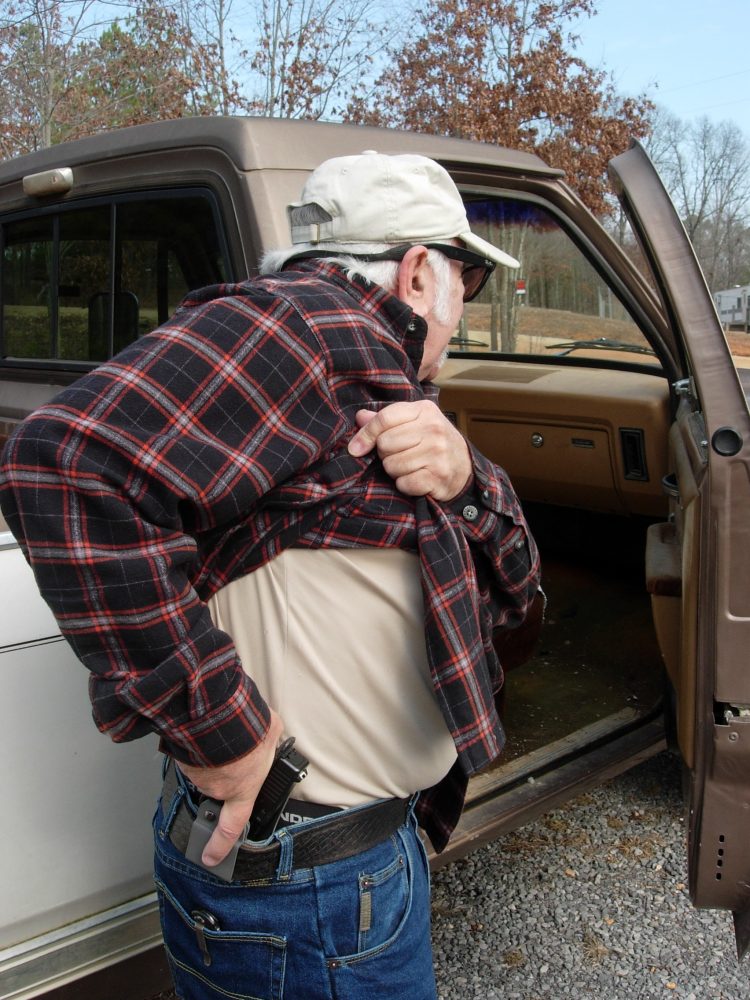
For the sake of simplicity, I normally limit myself to three types of carry. Belt holsters go on my strong side. Pocket pistols are in my right rear pocket. Ankle holsters go on the inside of my left ankle. At the beginning of the day when I gear up, I present each weapon three or four times to program my mind and body for that day. There is not enough time in a deadly force confrontation for you to remember where your pistol is or fumble around getting to it.
Also remember you may need to come up with alternative options for holstering or securing the weapon. My ankle holster takes time and both hands to holster the weapon, so to secure that weapon I slip it into the right rear pocket of my pants—the same place I carry if I’m wearing a pocket holster.
Inside-the-waistband (IWB) holsters are a great way to carry larger pistols. Black Kydex holster is designed so your shirt tucks in over the pistol’s grip, exposing only a small portion of the holster where it loops around the belt. Leather gear is a Summer Special from Milt Sparks, along with IWB mag pouch.
It’s also a good idea to learn and practice some retention techniques. Ideally, nobody should know you’re carrying until the weapon is in your hands, but theory and reality are sometimes different. Defending against a disarming attempt depends on the carry method, but the basic rules are:
- Don’t let them get close to you.
- If they do get close, don’t let them get their hands on your weapon.
- If they do get a grip on your pistol, don’t let them get control of it.
- No matter what, don’t stop fighting until you win.
Top: K-frame Smith & Wesson is largest revolver author can carry concealed. Right: S&W J-frame is easy to conceal. Left: North American Arms .22-caliber single-action revolver. Remember to search suspects thoroughly—the small single-shot derringer at the bottom can be hidden almost anywhere.
MINDSET
I carry concealed. I train and practice to defend the lives I am responsible for. I wear dull color clothes. I drive an old, beat-up truck that nobody notices. I go through life without attracting attention. I avoid trouble. I am a ghost. But if you force me to fight, I will defeat you, no matter what it takes. This is the combative mindset. This may sound simplistic, but it requires constant focus to develop and maintain the proper mindset—and it’s something only you can do.
Semi-auto pistols come in a variety of sizes and calibers and can be carried in a multitude of locations and methods. Type of clothing you wear may determine what carry mode works best—or the way you carry may dictate how you dress.
FINAL THOUGHTS
A friend who works for a government agency summed it up best when he said, “If anybody ever notices us, then we didn’t do our job right.” Completing your mission, whether it’s a covert assignment or simply making a grocery run, is about more than shoving a pistol in a pocket and calling yourself “ready.”
When faced with trouble, you need the mental and physical skills, the gear, and the confidence to win the fight, regardless of when or where it occurs.
[Tiger McKee is the director of Shootrite Firearms Academy (www.shootrite.org), located in northern Alabama, the author of The Book of Two Guns, and an adjunct instructor with the F.B.I.]
SOURCES:
Bianchi International
Dept. S.W.A.T.
3120 E. Mission Blvd.
Ontario, CA 91761
(800) 347-1200
www.bianchi-intl.com
Renegade Holsters
Dept. S.W.A.T.
3711 E. Gelding Dr.
Phoenix, AZ 85032
(602) 482-6777
Elite Operator (EOTAC)
Dept. S.W.A.T.
1940 Old Dunbar Road
West Columbia, SC 29172
(803) 744-9930
www.eotac.com
Milt Sparks Holsters, Inc.
Dept. S.W.A.T.
605 E. 44th St., #2
Boise, ID 83714
(208) 377-5577
www.miltsparks.com
